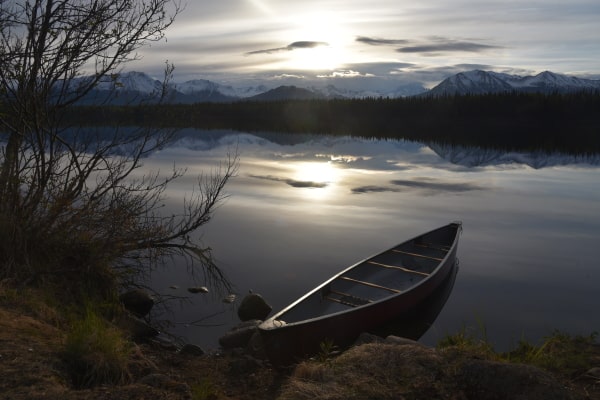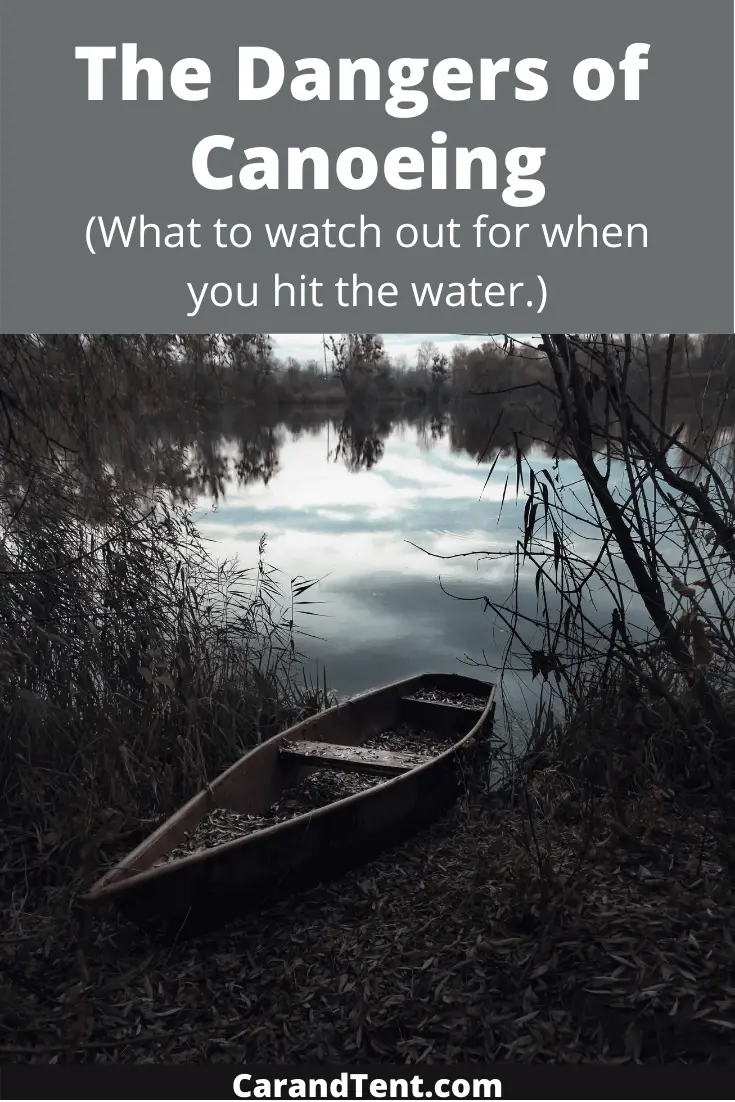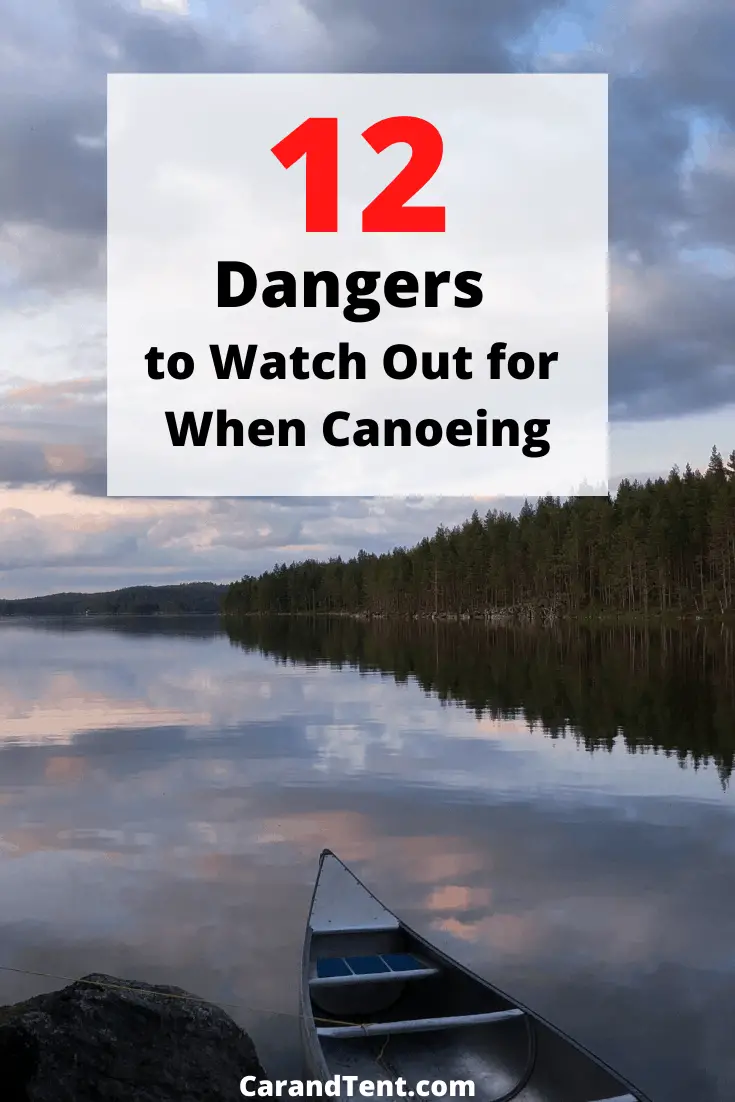
Doing things that are new to us can be scary. Canoeing is always new to somebody who’s never been on one.
But is canoeing dangerous? Canoeing can be dangerous in certain situations but with proper planning, it can be extremely safe. In fact, canoeing is much safer than more common activities like driving in a car or riding a bike.
The main dangers of canoeing usually come from inexperience or poor judgment. Here are some things that can get you into trouble when canoeing.
Table of Contents
Poor Entry and Exit From The Canoe
The first area of danger you might experience on a canoe is just trying to get into it. I’ve seen firsthand what happens to people when they try to get in and out of a canoe the wrong way. Wondering what happened? They fell down.
These people weren’t dumb, they just made a mistake and they stepped into the canoe while it was in a bad position. Even when a canoe is sitting in very shallow water it’s important for you to realize that it’s still deep enough to tip over.
Where people often make a mistake is when a small part of the canoe is on land and most of it is in the water. They think because part of the canoe is on land, the canoe must be stable. Unfortunately, this isn’t the case and the canoe will tip from side to side in the areas that are still in the water.
Luckily, the people I was with didn’t get hurt and they probably never made that mistake again. However, it could have gone the other way and it has for many people, so please be careful when entering and exiting your canoes and kayaks.
Failing to Wear a Life Vest
I’ve been on boats many times in my life and have seen people sitting on top of or next to their life preservers. The life vest wasn’t made for sitting. If these people had fallen over and hit their heads, they would not have been saved.
Always wear your life vest while canoeing. You never know when you might capsize and a life vest could easily save your life. This is true even when you’re paddling in shallow waters. The reason for this is that you could be knocked unconscious and there is a chance that the life vest could keep your head above water for you. If you don’t have it on and you fall on your head, you could end up drowning in waist-deep water.
Canoeing in The Ocean
Beginner canoers probably shouldn’t go canoeing in the ocean. This is especially true if the canoe isn’t really set up for ocean canoeing.
Canoes have open tops and the ocean has waves that can easily send water crashing into a canoe. Ocean canoers and canoers canoeing on large bodies of water like the great lakes equip their canoes with splash covers to help minimize water from getting in. They also learn how to paddle with waves to minimize the chances of splash over and capsizes.
Canoeing While Under The Influence
A drunk canoer might not be going as fast as a drunk driver, but he or she has the added danger of falling out of their canoe and drowning. On top of this, a canoer who is under the influence is more likely to canoe into dangerous areas that might have otherwise been avoided.
Even if you don’t harm yourself or anyone else while canoeing, you still run the risk of getting a DUI. Any state that can issue a DUI to someone on a non-motorized vehicle can issue a DUI to a canoer or kayaker.
Canoeing In Deep Waters When You Don’t Know How to Swim
Canoes can capsize pretty often and it isn’t always easy to right them while out on the water. For this reason, many people will swim with the canoe back to shore and right it on land or in shallow water.
People who don’t know how to swim don’t have this option. Stay away from deep water canoeing until you learn to swim and you’ll be much safer.
Canoeing Near Dams and Waterfalls
The water near a dam or a waterfall can go from incredibly calm to incredibly swift in an instant. Once the speed does pick up, you probably won’t be able to avoid going over.
Having this happen is much more dangerous than you might think. This is because, in addition to the initial fall, you also run the risk of getting stuck under the waterfall. What happens is the waterfall creates a strong undercurrent that pulls you right back under it making it difficult if not impossible to get out of it. Many strong swimmers and experienced canoers and kayakers have lost their lives due to this danger.
Click on the video below for a quick demonstration of how this happens. If you have some time, go to the beginning and watch the entire presentation. It’s really informative and proves that even a two-foot waterfall can be deadly.
Canoeing Near Large Boats
It isn’t hard for a large boat to accidentally run over a canoer. If you’re new to canoeing you may not be able to get out of the way or even accurately judge the speed of an oncoming boat properly.
My advice would be to stay out of waters with large boats on them when you’re just starting out. If you do venture into these waters, make sure you bring the proper lighting so that these boats can see you in poor visibility conditions.
Disregarding Tides in Tidal Waters
The John Heinz Water Refuge is a tidal area where canoers can easily become trapped. This is because the area can only be traversed two hours before high tide and two hours after high tide.
People in this area as well as other tidal areas who fail to recognize this get stuck until the tide changes again. This puts them at risk of dehydration and severe sun exposure. Know whether or not you’re in tidal waters and be sure to check the tides before heading out so you don’t have to worry about this risk.
Canoeing in Bad Weather
Would you like to be out on open water in an aluminum canoe during a lightning storm? If you answered no to this question, you should check the weather reports before you head out. Besides, who wants to go canoeing in the rain anyway?
Canoeing in Cold Weather
A good coat isn’t enough to keep you safe when cold weather canoeing. The reason for this is that your body isn’t going to care how great your coat is when you capsize your boat.
Whenever you go canoeing in cold weather, you’ll want to wear a wet or dry suit to help keep you safe. If you’re new to canoeing, you might want to save this experience for after you’ve done some warmer weather canoeing. Otherwise, learn all you can about cold weather canoeing and take the appropriate safety precautions before heading out on the water.
Canoeing Alone
Canoeing is almost always safer when you’re in a group. Many things can happen out on the water and an extra set of eyes and hands might be the difference between you surviving or perishing on your canoe trip.
For those of you who don’t have anybody to canoe with, consider getting canoeing lessons or hiring a guide. Another option might be to join a local meetup group. You’ll have a much safer time canoer and you may even make some new friends.



